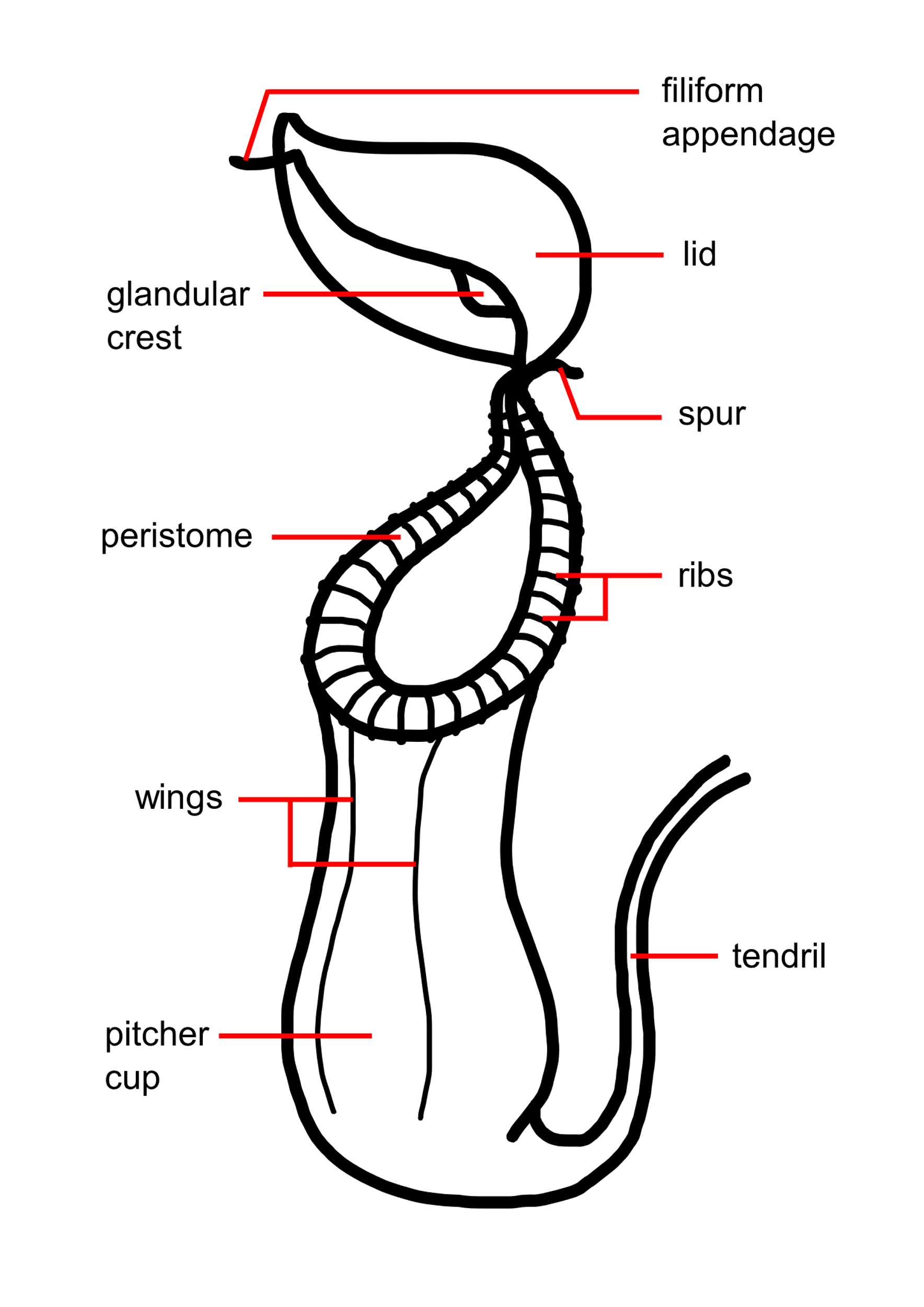
Explain the nutrition in pitcher plants with diagrams.
Answer
466.5k+ views
1 likes
Hint: Pitcher plant has a partial heterotrophic mode of nutrition. To preserve its nitrogenous requirement, it nurtures insects as pitcher flowers grow in nitrogen-lacking soil.
Complete answer:
The most common term 'partially heterotrophic' is used for insectivorous plants. They have chlorophyll and are capable of carrying out photosynthesis however they depend on some of the vitamins (like nitrogen) on other organisms. The pitcher plant is observed as insectivorous. It grows and develops in nitrogen-deficient soil so derives its nitrogen from insects.
The leaf of the pitcher plant is changed to strengthen a pitcher-like shape. The brilliant coloration of the pitcher makes it very appealing to insects. Within the pitcher; there are numerous hair-like structures. These hairs lead the entrapped insects downwards The lid of the pitcher shuts down once an insect lies on the pitcher of the plant and the insect gets entrapped inside the pitcher.

After this, the insect then breaks down and is digested by means of the useful resource of enzymes produced and synthesised by the cells of the plants. The prey substances captured are then transformed into a mixture of nitrogenous compounds from which the plant gains its mineral nutrition, mainly nitrogen and phosphorus.
So, the answer to the above question is given to be the mode of nutrition in the pitcher plant is partially heterotrophic nutrition.
Note: While providing answer to the question always keep in mind that the pitcher plant grows in areas where the soil is lacking in minerals or excessively acidic for most of the plants
Complete answer:
The most common term 'partially heterotrophic' is used for insectivorous plants. They have chlorophyll and are capable of carrying out photosynthesis however they depend on some of the vitamins (like nitrogen) on other organisms. The pitcher plant is observed as insectivorous. It grows and develops in nitrogen-deficient soil so derives its nitrogen from insects.
The leaf of the pitcher plant is changed to strengthen a pitcher-like shape. The brilliant coloration of the pitcher makes it very appealing to insects. Within the pitcher; there are numerous hair-like structures. These hairs lead the entrapped insects downwards The lid of the pitcher shuts down once an insect lies on the pitcher of the plant and the insect gets entrapped inside the pitcher.

After this, the insect then breaks down and is digested by means of the useful resource of enzymes produced and synthesised by the cells of the plants. The prey substances captured are then transformed into a mixture of nitrogenous compounds from which the plant gains its mineral nutrition, mainly nitrogen and phosphorus.
So, the answer to the above question is given to be the mode of nutrition in the pitcher plant is partially heterotrophic nutrition.
Note: While providing answer to the question always keep in mind that the pitcher plant grows in areas where the soil is lacking in minerals or excessively acidic for most of the plants
Latest Vedantu courses for you
Grade 11 Science PCM | CBSE | SCHOOL | English
CBSE (2025-26)
School Full course for CBSE students
₹41,848 per year
Recently Updated Pages
Master Class 11 Economics: Engaging Questions & Answers for Success

Master Class 11 Business Studies: Engaging Questions & Answers for Success

Master Class 11 Accountancy: Engaging Questions & Answers for Success

Master Class 11 English: Engaging Questions & Answers for Success

Master Class 11 Computer Science: Engaging Questions & Answers for Success

Master Class 11 Maths: Engaging Questions & Answers for Success

Trending doubts
State and prove Bernoullis theorem class 11 physics CBSE

1 ton equals to A 100 kg B 1000 kg C 10 kg D 10000 class 11 physics CBSE

State the laws of reflection of light

One Metric ton is equal to kg A 10000 B 1000 C 100 class 11 physics CBSE

1 Quintal is equal to a 110 kg b 10 kg c 100kg d 1000 class 11 physics CBSE

Difference Between Prokaryotic Cells and Eukaryotic Cells




